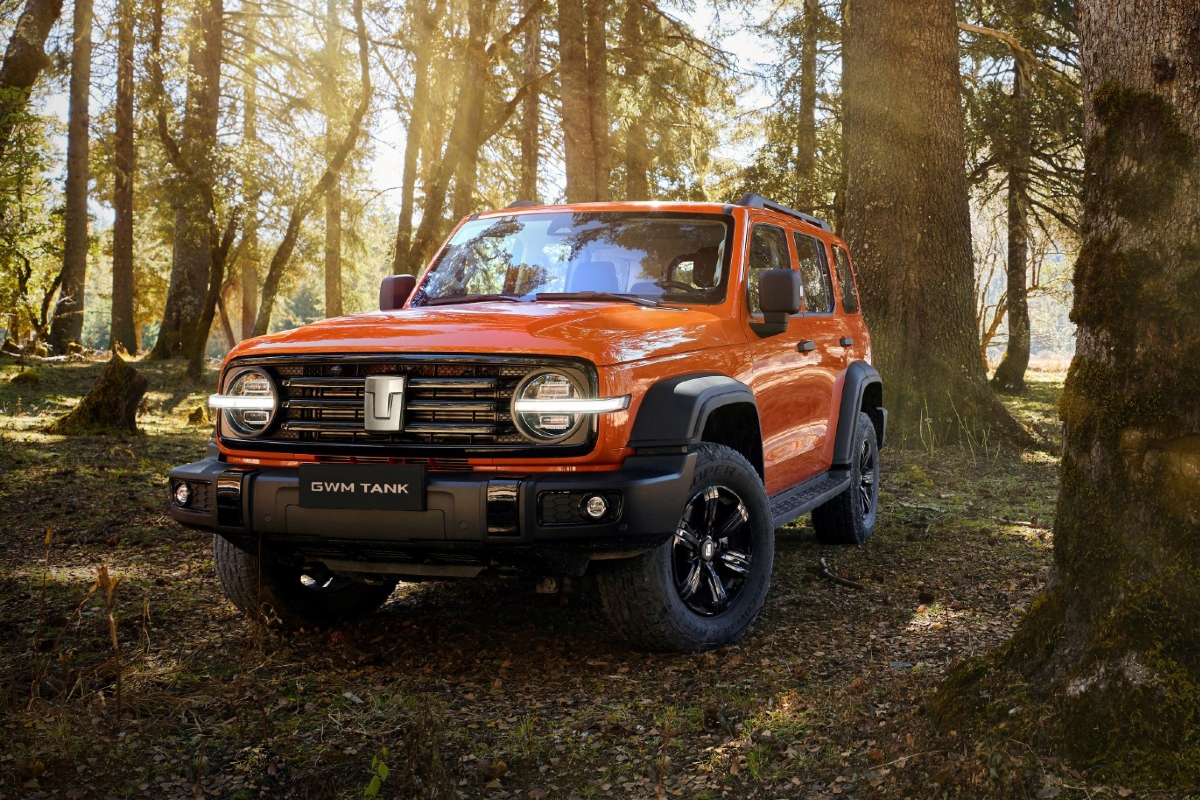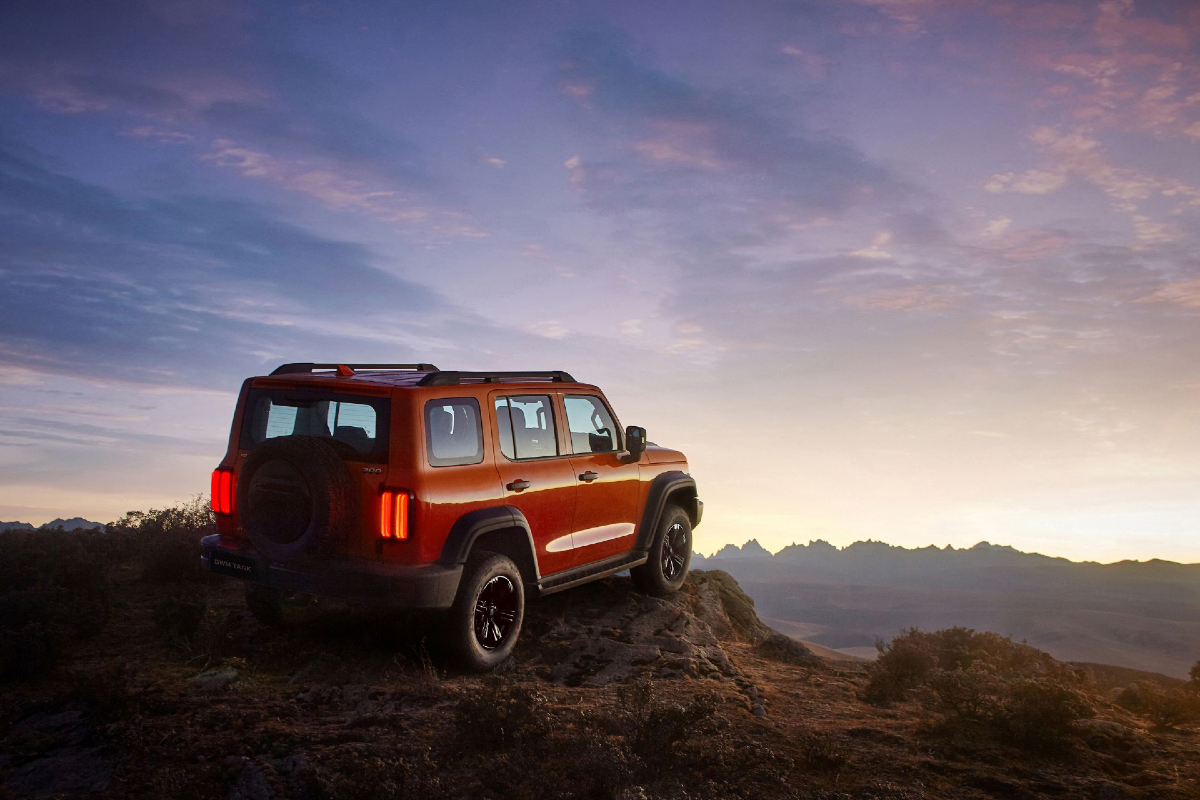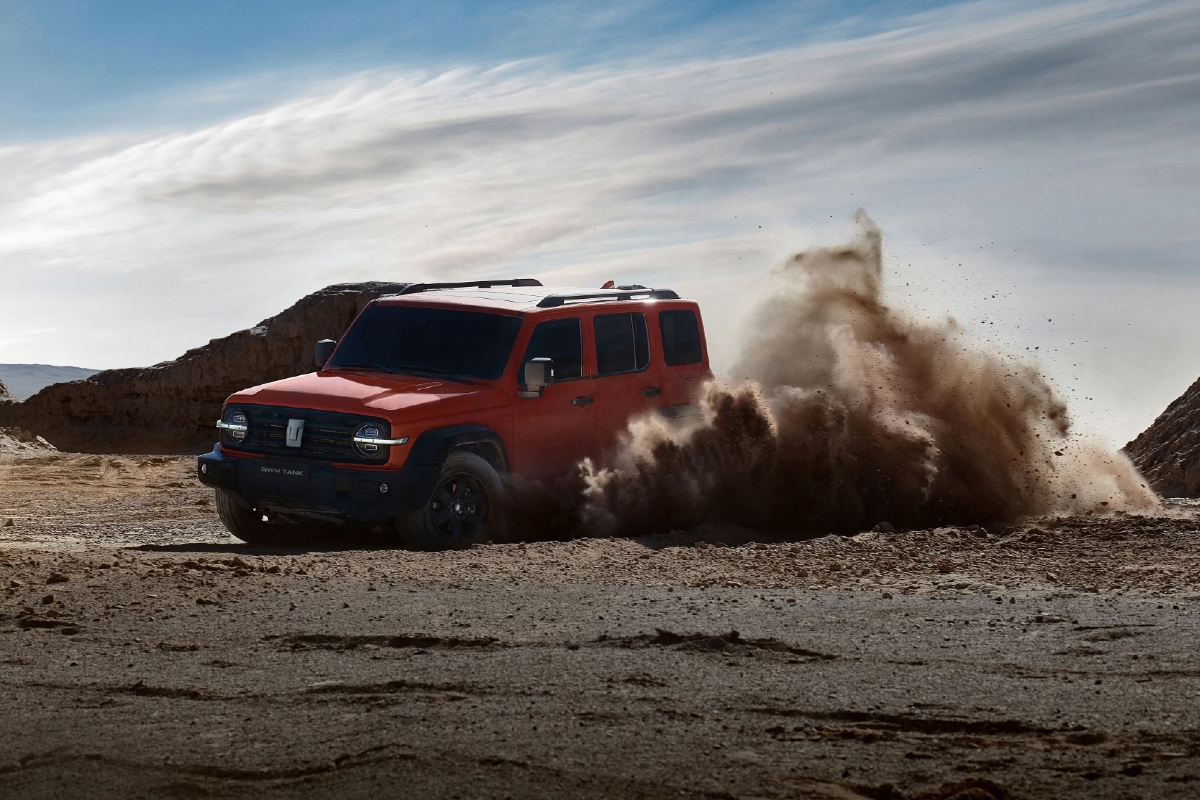With the newly launched turbo-diesel engine accounting for about 60 per cent of Tank 300 sales – in a segment dominated by oilers – GWM claims to have made more than 20 engineering enhancements to toughen up the petrol and hybrid examples of the 4×4.
This includes the fitment of larger front brake rotors and calipers, strengthened front suspension knuckles, upgraded wheel bearings and a reinforced prop shaft.
The upgrades have resulted in the braked towing capacity of the petrol and hybrid Tank 300s rising to 3000kg, up 500kg on before, and now matching the turbo-diesel.

Payload capacity has also increased, with the petrol Tank 300 now able to hold up to 610kg (up from 397kg) while the hybrid can carry 600kg (up from 420kg) – the latter of which mirrors the turbo-diesel model.
GWM says these engineering tweaks have been made to “increase durability, performance and drivability” of the Tank 300.

While there’s been no price change to accommodate the upgrades, GWM has culled the base Lux grade of the petrol and hybrid-powered Tank 300, with the variant now remaining exclusively on the diesel.
All three powertrains can be purchased in better-equipped Ultra guise.
“These important updates reflect our global team’s growing understanding of the Australian market, where towing capability and payload remains a key consideration for buyers in this segment”, said Steve Maciver, GWM’s Head of Marketing & Communications.
Between January and April 2025, GWM has delivered 1278 Tank 300s locally, outselling the Toyota Fortuner, but not more established off-road oriented SUVs such as the Suzuki Jimny, Ford Everest and Toyota LandCruiser Prado.













Discussion about this post